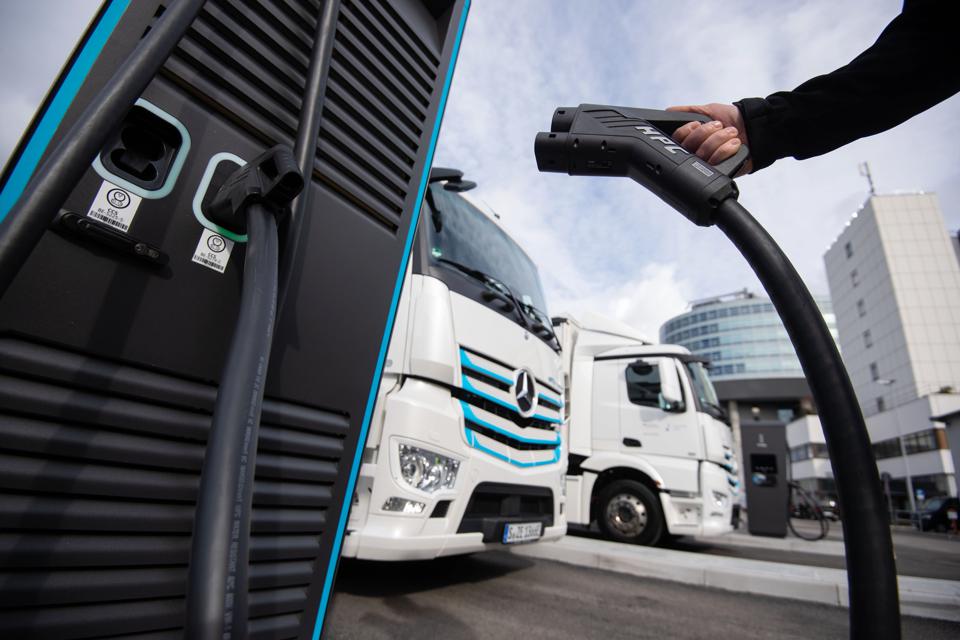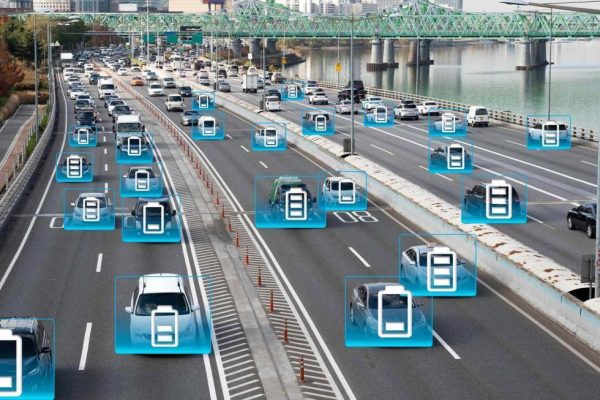The EU’s transport sector currently accounts for nearly a quarter of total EU emissions, and its footprint has been further growing in recent years. To tackle these emissions and reach the EU’s legally binding aim of carbon neutrality by 2050, the Commission’s “Fit for 55” package has introduced ambitious new proposals to phase out internal combustion engines by 2035.
However, arguments have since emerged over the best technological path to climate neutrality in EU road transport. Various interest representatives have argued in favour of a prominent role for hybrid electric vehicles, hydrogen, or synthetic e-fuels.
AVER is convinced the only viable way to decarbonise the road transport sector, whilst safeguarding jobs and EU competitiveness, is to commit to the full direct electrification of the road transport sector, using 100% battery electric vehicles (BEVs).
1. Continued use of fossil fuels as “transitional” solutions will set the EU up for climate failure
Today, new road vehicles routinely remain on EU roads for 15 years or more. The average Romanian passenger car is 16.9 years old, while Lithuanian cars clock in at 17 years and Greek cars at 16.6. This means that even the proposed 2035 phase-out date for vehicles that emit CO2 is on the late side to reach the EU’s legal obligation of carbon neutrality by 2050, and precludes a medium-term role for hybrid vehicles or other fossil fuel vehicles such as those run on CNG and LNG. Even the EU’s own taxonomy rules establish that by 2026, only zero emission vehicles will be considered as contributing to climate change mitigation.
Hybrids are not only not zero-emissions vehicles, but the low emissions values often advertised by manufacturers routinely underestimate the CO2 footprint of plug-in hybrid electric vehicles. The International Council on Clean Transportation (ICCT) estimates that PHEV fuel consumption and tail-pipe CO2 emissions in real-world driving, on average, are approximately two to four times higher than type-approval values.
A continued role for hybrids or LNG on EU roads until 2050 is therefore incompatible with EU climate aims.
2. Energy efficiency: electromobility makes ideal use of available energy
The EU’s climate strategy in road transport must therefore rely exclusively on zero-emissions solutions. But not all zero-emissions are created equal. Renewable energy still is, and is set to remain, a scarce resource, accounting for only just over a fifth of total EU energy consumption in 2020. It is thus imperative to make ideal use of the limited supply available at present.
This is where the superior efficiency of battery electric drivetrains comes into play: they convert nearly 80% of the renewable energy charged into propulsion, whereas hydrogen fuel cell vehicles are only about 33% efficient, and just about 15-20% of the invested renewable electricity is effectively used for propulsion when using e-fuels. This means electric vehicles can travel four times further than a car running on e-fuels using the same amount of renewable energy, allowing a much higher share of the energy delivered to transport to be green. It also means that, due to their lower overall use of energy, electric vehicles are already cleaner than traditional internal combustion cars across the entire EU – even when run on, for example, the coal-heavy Polish electricity mix.
The same cannot be said about the energy-intensive production of e-fuels and hydrogen. Due to severe constraints in renewable energy availability to produce them, and at present technologically limited capacity and high price for their production, renewable hydrogen and e-fuels should be used where direct electrification is not possible at present – for example for the chemical and steel industry, or in long-distance shipping and aviation. These sectors will not manage to decarbonise by 2050 if the low capacities of available carbon-neutral energy carriers are used by a road transport sector that could easily be directly electrified instead.
Direct electrification, making the most of the renewable energy available, is therefore more climate-friendly than any other technical solution for the road transport sector.
3. E-mobility tackles key environmental and health issues beyond climate change
Beyond its superior decarbonisation potential, e-mobility comes with a variety of significant environmental and health benefits compared to internal combustion vehicles – including hybrids and those run on e-fuels or gas (LNG, CPG, LBG..).
Air pollution is one of the biggest environmental risks to health in Europe. The European Environment Agency (EEA) estimates that more than 300.000 premature deaths occur each year in Europe due to air pollution, with internal combustion-powered transport being one of the biggest contributors. Hybridisation and e-fuels do not solve this problem: according to recent research, cars powered by synthetic fuel emit as much poisonous nitrogen oxides (NOx), almost three times more carbon monoxide, and up to two times more ammonia than fossil fuel engines.

Lastly, the switch to e-mobility provides a key opportunity to build a more resource efficient, circular automotive industry. While existing fossil-fuel technologies and their established value chains come with entrenched problems, such as oil spills and methane leaks, effective legislation such as the EU battery regulation can help ensure sustainably and efficiently produced electric vehicles in the entire Union right from the outset.
E-mobility can provide both the full decarbonisation of EU road transport and clean, quiet and healthy inner cities for EU citizens.
4. Clarity for industry is needed to safeguard EU competitiveness and create jobs
As outlined above, electric mobility is more efficient than any other technology on the market, and much cleaner and quieter than internal combustion engines. Despite these benefits, some proponents of alternative technologies argue that the use of “transitional” technologies such as e-fuels and hybrids will be a necessity to safeguard European competitiveness and jobs. However, recent studies indicate that fear mongering about job losses in the transition is not justified, with the shift to EV expected to have a net-zero effect on jobs in the EU and creating many new high-quality jobs in adjacent industries.
In fact, the argument ignores a global movement towards electrification: Britain has pledged to phase out internal combustion engines by 2030, whereas Norway will only allow the sale of zero-emission cars by 2025. Looking beyond Europe, Chile has set a 2035 phase-out date, whereas the Biden administration is aiming to make half of all newly sold vehicles electric by 2030 in the US, which, in turn, trails China in EV sales at present.

Beyond employment opportunities, direct electrification is the economically most sensible option available, providing significant savings in energy infrastructure investments compared to a reliance on gaseous energy carriers. The technology is fully mature and an existing distribution grid is available, providing for shorter implementation periods, cheaper cost and lower resource use than competing technologies such as hydrogen. It is also increasingly clear that, as electrification emerges as the “new normal” for passenger cars, investment into competing technologies poses the risk of significant stranded assets.
In contrast to many competing technologies such as hydrogen and e-fuels, electric cars are technologically mature and mass deployment has begun. Full certainty for an industry largely already leaning towards full electrification will allow Europe to take a position of global technology leadership, while avoiding significant stranded assets.
Fully electric vehicles are the only viable solution to decarbonising EU road transport in time for 2050, while making ideal use of scarce renewable energy, guaranteeing cleaner and healthier inner cities, and safeguarding EU jobs and competitiveness in a global race towards decarbonisation.




